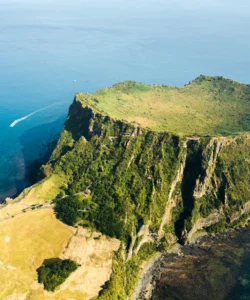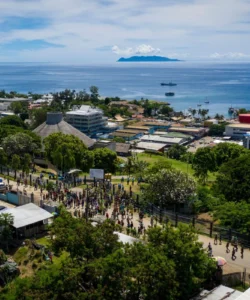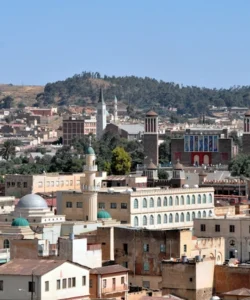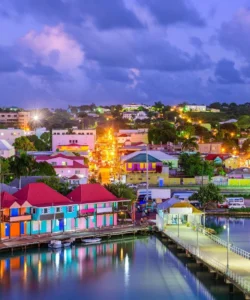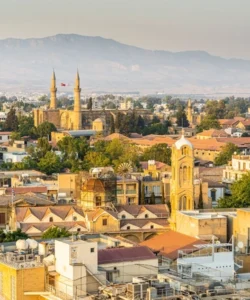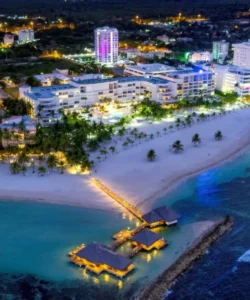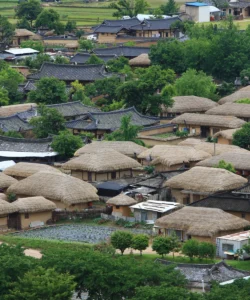Chile is a remarkably long and narrow country stretching along the southwestern coast of South America, boasting an extraordinary range of climates and landscapes, from the world’s driest desert in the north to alpine tundras and glaciers in the south.
Listen to an introduction about Chile
![]()
Area and Population:
Chile covers an area of approximately 756,102 km² (291,933 sq mi), not including its Antarctic claims. Its unique shape gives it over 4,300 km (2,670 miles) of coastline. Its population is estimated to be around 19.9 million inhabitants (as of 2024).
Language:
The official language of Chile is Spanish. Chilean Spanish has its own distinct accent and local slang (chilenismos). Indigenous languages like Mapudungun (spoken by the Mapuche people) are also present, though Spanish is universally spoken.
Currency:
The currency of Chile is the Chilean Peso (CLP).
Religion:
The predominant religion in Chile is Catholicism, a legacy of Spanish colonization. Protestantism, particularly Evangelical denominations, has a significant and growing presence. There are also smaller percentages of other faiths and non-religious individuals.
Capital:
The capital city of Chile is Santiago, nestled in a valley surrounded by the Andes Mountains to the east and the Chilean Coastal Range to the west. It is a bustling metropolis and the country’s political, economic, and cultural center.
Major Cities:
Besides Santiago, other significant cities in Chile include:
- Valparaíso: A UNESCO World Heritage site and major port city on the coast, known for its colorful hillside houses, historic funiculars, and bohemian atmosphere.
- Concepción: A large city in the central-south, an important industrial and university center.
- Antofagasta: A key mining city in the Atacama Desert in the north.
- La Serena: A coastal city in the north-central region, known for its beaches and colonial architecture.
- Puerto Montt: A gateway city to the Chilean Patagonia and the Lake District.
- Punta Arenas: One of the southernmost cities in the world, located in Chilean Patagonia, a base for exploring Tierra del Fuego and Antarctic cruises.
Attractions and Wonders:
Chile’s extreme geography offers an incredible array of natural wonders:
- Atacama Desert: The driest non-polar desert in the world, located in northern Chile. It’s famous for its surreal landscapes (like Valle de la Luna), geysers (El Tatio), salt flats, and incredible stargazing opportunities due to its clear skies.
- Patagonia: The southern region of Chile, shared with Argentina, known for its dramatic landscapes of jagged mountains, glaciers, fjords, and national parks.
- Torres del Paine National Park: A world-renowned hiking destination in Chilean Patagonia, famous for its iconic granite peaks, turquoise lakes, and abundant wildlife (guanacos, pumas).
- Marble Caves (Capillas de Mármol): Unique geological formations on Lake General Carrera, accessible by boat tours, with stunning blue and green hues.
- Easter Island (Rapa Nui): A remote Polynesian island in the Pacific Ocean, a special territory of Chile, famous for its enigmatic monumental stone statues (moai). It’s a UNESCO World Heritage site.
- The Chilean Lake District: A beautiful region in central-south Chile with stunning lakes, volcanoes (like Osorno and Villarrica), national parks, and charming German-influenced towns (e.g., Frutillar, Puerto Varas).
- Santiago: Explore its historic center (Plaza de Armas, Metropolitan Cathedral), climb San Cristóbal Hill for panoramic views, visit vibrant neighborhoods like Bellavista, and enjoy its diverse culinary scene.
- Valparaíso: Wander through its labyrinthine hills, ride historic funiculars, admire street art, and soak in the bohemian atmosphere.
- El Tatio Geysers: A high-altitude geothermal field in the Atacama Desert, best visited at sunrise for the dramatic steam columns.
- Central Valley Wine Region: Chile is a major wine producer, particularly known for its Cabernet Sauvignon, Carmenere, and Sauvignon Blanc. Numerous vineyards near Santiago offer tours and tastings.
Architecture:
Chilean architecture showcases a mix of influences:
- Colonial Architecture: While many colonial buildings were destroyed by earthquakes, examples can still be found in older parts of cities like Santiago, La Serena, and Valparaíso, though often adapted to be earthquake-resistant.
- Neoclassical and Eclectic: Many grand public buildings, churches, and mansions from the late 19th and early 20th centuries in Santiago and other major cities reflect European styles.
- Modernist and Contemporary: Santiago, in particular, has seen significant modern urban development with glass skyscrapers and contemporary designs.
- Valparaíso’s Unique Style: The colorful, often haphazardly built houses clinging to the hillsides of Valparaíso give it a unique, informal architectural character.
Roads:
Chile has one of the best-developed road networks in South America, especially the Ruta 5 (Pan-American Highway), which runs almost the entire length of the country. Major highways are generally well-maintained and paved. However, in more remote areas, particularly in Patagonia and parts of the Atacama, roads can be unpaved, gravel, or less developed. Driving through Chile’s varied landscapes can be a breathtaking experience.
Hotels:
Chile offers a wide range of accommodation options. In major cities like Santiago, you’ll find luxury international chain hotels, boutique hotels, business hotels, and numerous mid-range and budget-friendly hotels and hostels. In tourist regions like Patagonia and the Atacama Desert, there are high-end eco-lodges, boutique hotels, and more rustic refugios (mountain huts) for trekkers. The Lake District offers charming guesthouses and resorts.
Restaurants and Cuisine:
Chilean cuisine is hearty, often featuring seafood (due to its long coastline), beef, and fresh produce.
- Key Dishes:
- Pastel de Choclo: A savory corn pie, often with a filling of ground beef, onions, olives, and hard-boiled eggs, topped with a creamy corn puree.
- Empanadas: Baked or fried pastries with various fillings, most commonly pino (ground beef, onion, olive, and hard-boiled egg) or cheese.
- Ceviche: While different from Peru’s, Chilean ceviche typically uses white fish (like hake) marinated in lemon juice, onion, and cilantro.
- Curanto: A traditional seafood and meat stew cooked in a pit with hot stones, popular in Chiloé Island.
- Completo: The Chilean version of a hot dog, often loaded with mayonnaise, chopped tomatoes, and avocado.
- Asado: Chilean barbecue, similar to Argentina, featuring grilled meats.
- Cazuela: A hearty, clear stew with a piece of meat (beef, chicken, or pork), a potato, a piece of corn on the cob, and other vegetables.
- Fresh Seafood: Due to the long coastline, fresh seafood like salmon, hake, sea urchins (erizos), and abalone (locos) is abundant.
- Restaurants: Santiago boasts a vibrant dining scene with options ranging from upscale international restaurants to traditional Chilean eateries. Coastal cities specialize in seafood. Chile is also a major wine-producing nation, and experiencing its wines with local cuisine is a highlight.


